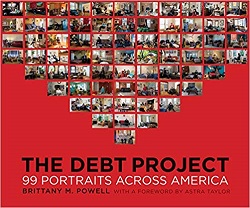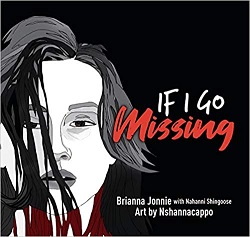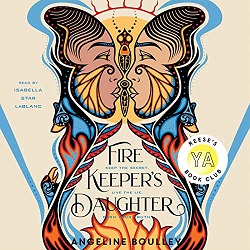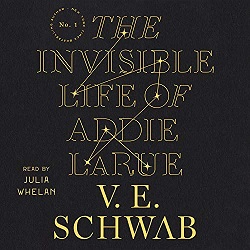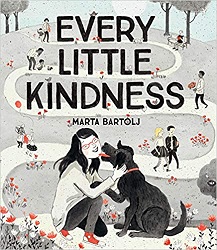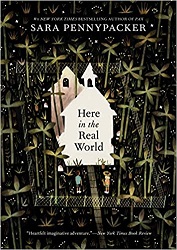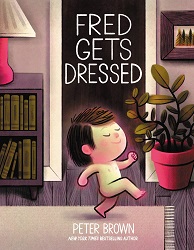Review of The Little Wooden Robot and the Log Princess, by Tom Gauld
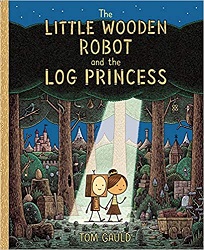 The Little Wooden Robot and the Log Princess
The Little Wooden Robot and the Log Princess
by Tom Gauld
Neal Porter Books (Holiday House), 2021. 32 pages.
Review written October 29, 2021, from a library book
Starred Review
This picture book gives a sweet original fairy tale about perseverance and devotion. It hit just exactly the right note with me.
As we begin, a king and queen (with different color skin from each other) are childless and want a baby. The king goes to see the royal inventor, and the queen goes to see a clever old witch.
They both asked for the same thing: a child.
And so the little wooden robot and the log princess come to life. They love each other and are loved by their parents and play happily together. But at night, the log princess turns back into a log when she goes to sleep and has to be woken up with magic words.
Usually, her brother wakes her first thing in the morning, but one morning he’s distracted by a traveling circus.
When he gets back, the log that is his sister has been thrown out the window!
So begins a long saga to rescue her. And then he winds down, and his sister needs to rescue him. And it all comes full circle in the end and we get a nice surprise at who does the ultimate rescuing before happily ever after.
And it’s just such a nice story that makes me really happy.
My favorite pages, though, are the ones about the adventures they have along the way, “too many to recount here.” For the little wooden robot, they are:
The Giant’s Key
The Family of Robbers
The Old Lady in a Bottle
The Magic Pudding
The Lonely Bear
The Queen of the Mushrooms
These adventures are listed on a page with a small picture for each adventure — so intriguing and fun! There’s a similar page when it’s the log princess’s turn to have adventures.
I suppose part of why you just have to love these characters is their smiley face features and the sweet simplicity of their determination.
This one would be good for young elementary school kids as well as preschoolers, so I’m going to mark it to booktalk next summer.
Find this review on Sonderbooks at: www.sonderbooks.com/Picture_Books/little_wooden_robot_and_the_log_princess.html
Disclosure: I am an Amazon Affiliate, and will earn a small percentage if you order a book on Amazon after clicking through from my site.
Disclaimer: I am a professional librarian, but the views expressed are solely my own, and in no way represent the official views of my employer or of any committee or group of which I am part.
What did you think of this book?
